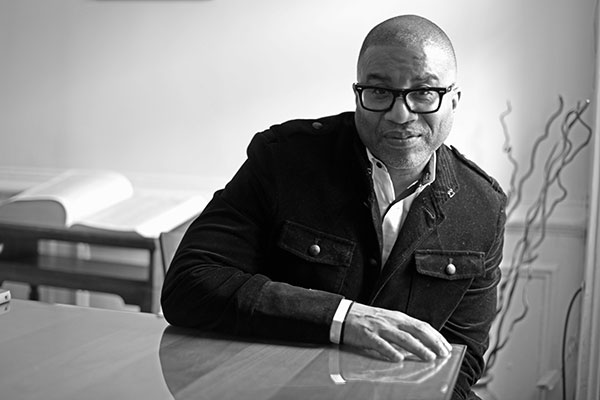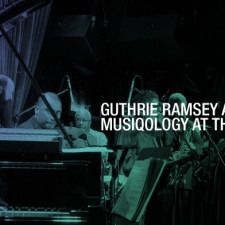Part I
Black Music Month, Day #15
 I first discovered the ML3556 section of the library as an undergraduate and grew enamored of
I first discovered the ML3556 section of the library as an undergraduate and grew enamored of
the literature about black music, a topic that truly charged me up academically. Browsing the stacks became a favorite pastime as I read books by LeRoi Jones, Charlie Keil, Eileen Southern, Dena Epstein, and other trailblazing writers. Venturing further into this world of letters, I soon learned about journals that featured the work of groundbreaking scholars such as Portia Maultsby, Samuel Floyd, Josephine Wright, and Olly Wilson, all of whom laid the foundation for black music research’s modern era, beginning in the mid-1970s. The present collection of essays of my own contributions to this field—some previously published, others new—represents a partial view of my intellectual journey since those stack-browsing days (and nights!).
As I embarked on graduate studies at the University of Michigan in 1989, there was lots of naiveté. As a gigging pianist and elementary school educator, I possessed drive but lacked a clear sense of what was really at stake, of what the primary arguments defining the field were, and how the study of black music (my primary interest) fit into the larger scheme of things—how it fit, for instance, into what counted as valuable knowledge in the systematic study of music history. Pursuit of the PhD. was, for me, simply a logical extension of my interests in the power that many experienced in music making and in deep listening. There was a lot learn. My traversing and appreciating the space between being, on
the one hand, a producer of organized sound, and on the other, a contributor to the world of ideas about sound was the first order of business. And there were, to be sure, many ideas to contend with at that time as musicology scrambled to reshape its profile to be “new,” that is, more inclusive in both topic and methodology.
As I explained in Race Music(2003), I understood early in life that music was an activity that did important cultural work, although I could not have spoken about it in precisely those terms. Thus, the book opened by recounting some early experiences in African American communal spaces (“community theaters”) and how music informed them. The extended community into which I was born and raised—the greater South Side of Chicago—had made an imprint on me but had had implications for the study of American music more generally.
The post-migrant, Up-South Delta culture of my youth was, indeed, a sprawling and robust black social world. It comprised housing projects, tenements, two-flats, storefront churches, cathedrals, barber and beauty shops, political machines, sporting cultures, print mass media, parades, and radical bookstores; and its cultural politics ranged from traditional notions of uplift to unapologetic militancy. Expressive culture abounded in poetry readings and speech recitations on Sunday afternoon church programs. Street theaters, discos, live music venues, and even high school music programs all specialized in circulating their own brand of music and dance “literacies.” At communal performance spaces like “midnight” roller rink sessions and
church musicals; and in local college gospel choirs and jazz ensembles—we experienced a dynamic social world saturated in cultural forms that worked together to produce a feeling, a structure, an atmosphere in which “blackness” was practiced as a way of being in and thinking about the world. Not as wholly deterministic, but as a range of options for making identifications.
Of course, the serendipity of one’s birth—no matter how germane to the topic of one’s study—does not solely a scholar make. Some would even fear that this proximity might endanger the sanctity, objectivity, or even ethics of the process. Indeed, the fact remains: for every instance of on-the-ground culture-making taking place internally in black Chicago, to  the scholar, its social world has been equally “made” by the city’s formal study. Chicago—particularly its black component—has been the focus of myriad sociological investigations—I’m thinking here most prominently of St Clair Drake and Horace Cayton’s monumental Black Metropolis (1945). Studies like these have helped to make it the perennial black metropolis of the ethnographic imagination. With such intensive “making” on either side of this social ledger, the relationship between the studied and the ones doing the studying seems to be one of interdependence, and as such, renders any “insider” status but one point of entry into this topic. Understanding the relationship between these two aspects of the equation has fascinated me and, as readers will see, it has animated some of my published work, hopefully productively so.
the scholar, its social world has been equally “made” by the city’s formal study. Chicago—particularly its black component—has been the focus of myriad sociological investigations—I’m thinking here most prominently of St Clair Drake and Horace Cayton’s monumental Black Metropolis (1945). Studies like these have helped to make it the perennial black metropolis of the ethnographic imagination. With such intensive “making” on either side of this social ledger, the relationship between the studied and the ones doing the studying seems to be one of interdependence, and as such, renders any “insider” status but one point of entry into this topic. Understanding the relationship between these two aspects of the equation has fascinated me and, as readers will see, it has animated some of my published work, hopefully productively so.
Most of the writing that inspired me was produced during the Black Consciousness period in
American history, from the mid-1960s through the 1970s. While I didn’t engage this literature until some years after it first appeared, the work reminded me of my coming-of-age years, a time in which culture and politics were often entwined with combustion. Recently while speaking to a colleague in another discipline, an expert in architecture and the cultural politics of urban space, I recalled one of the urban legends we were told heard as young teenagers. In the basement of a “black book” store lined with literature, incense, posters and the ubiquitous colors of “black liberation”—red, black, and green—some comrades and I were directed to a wall splayed with maps of our surrounding area. The intense, Afro-ed, twenty-something young man who was directing our “tour” of the space stressed to us, his young and rapt audience, that “the Man’s” plan to extend Interstate 57 into our neighborhood was a ploy to contain our community with military force when “the Revolution” finally hit. I told this story to my colleague with an air of incredulity. I was taken aback when she, an Australian, said—with no sense of irony—that the ominous sounding plan was at least part of the reason for that highway.
 As I reflect back, I realize now that experiences like these—and there were many more—influenced me musically, intellectually, and socially. I’ve embraced them as a baseline worldview that, for better or worse, has informed the political shades of my musical writing. I have continually sought out ways to participate in a “project musicology” that would push out at the edges of the standard, “objective,” narrative mode. Indeed, if nothing else, one of the things I took from those I-57 days was that freedom needed to be pursued at all costs, and that it was always a pressing matter.
As I reflect back, I realize now that experiences like these—and there were many more—influenced me musically, intellectually, and socially. I’ve embraced them as a baseline worldview that, for better or worse, has informed the political shades of my musical writing. I have continually sought out ways to participate in a “project musicology” that would push out at the edges of the standard, “objective,” narrative mode. Indeed, if nothing else, one of the things I took from those I-57 days was that freedom needed to be pursued at all costs, and that it was always a pressing matter.
Tags: Black Music, Charlie Keil, Dena Epstein, Guthrie Ramsey, leroi jones, musicology, Olly Wilson, Portia Maultsby, Samuel Floyd, University of Michigan






 Share On Facebook
Share On Facebook Tweet It
Tweet It

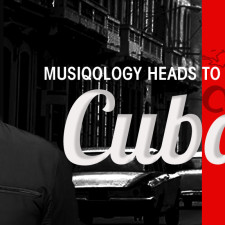
![[Video] BBC Documentary on Allen Toussaint](https://musiqology.com/blog/wp-content/uploads/2015/11/allen-toussaint-225x225.jpg)

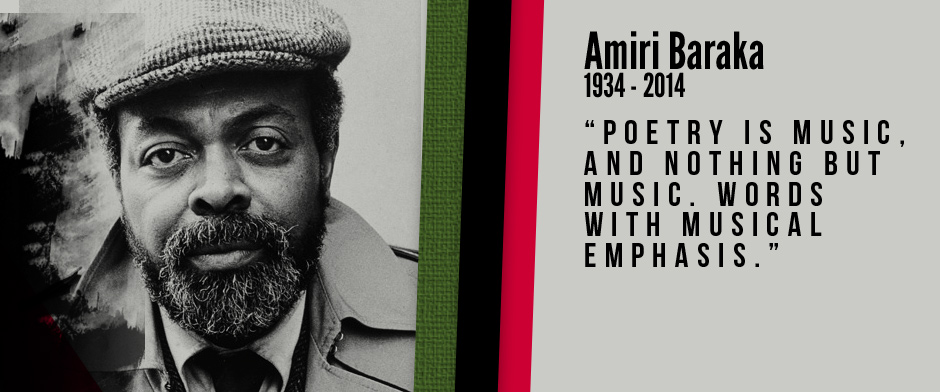
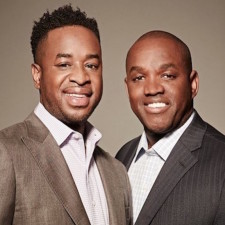
![[VIDEO] Black Music and the Aesthetics of Protest](https://musiqology.com/blog/wp-content/uploads/2015/03/onlynchings1-225x225.jpg)
